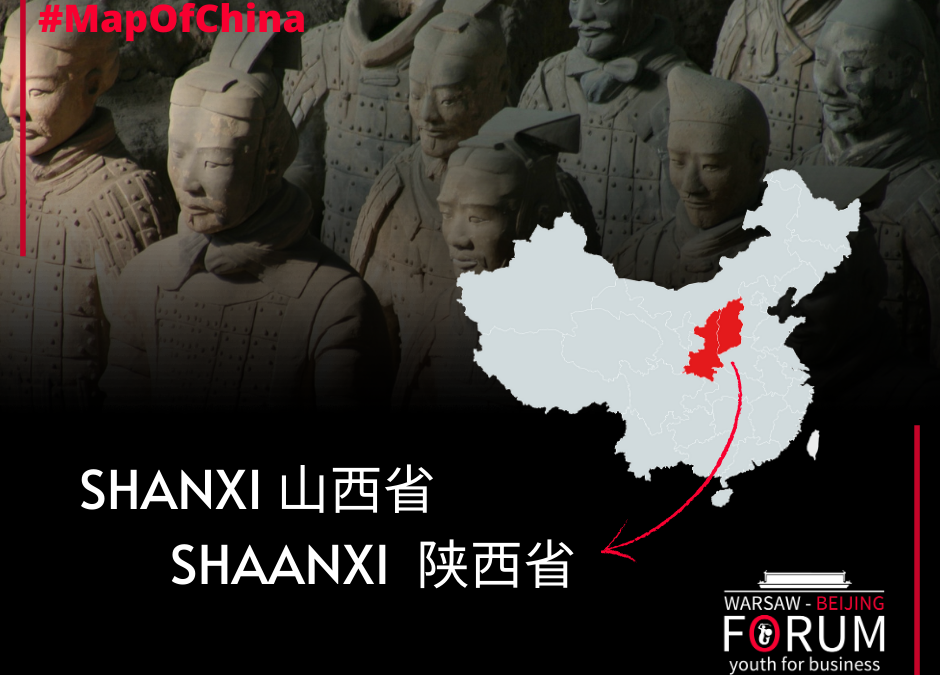Shanxi 山西
English translation of Shanxi means ‘West of the (Taihang) Mountains’. This provides more information about the exact location of this North Middle part of the People’s Republic of China’s province. The largest city and the capital of this region is called Taiyuan. This modern place is situated among the top 500 cities in the world by scientific research outputs according to data collected by Nature Index, due to several key universities in China, including Taiyuan University of Technology, Shanxi University and North University of China. In the late 90s and at the beginning of the XX century this city was infamous because of insanely high air pollution level. In 2013 it was even acknowledged as one of ten the most polluted cities around the world. This city provides the country with many different natural resources such as: coal, iron, marble, quartz, copper and gold. Not surprisingly, the entire Shanxi Province is the country’s main coal mining center. Crude oil, iron ore, gold and asbestos are also obtained there. Historically, Shanxi Province was a buffer zone between China and Mongolia and other Central Asian states, with many military and trade routes which helped in spreading Indian Buddhism in China. Culturally Shanxi Province provided the country with its own kind of opera called ‘The Shanxi Opera’. For tourists the presence of Ancient City Pingyao should be important. In 1997 this city was added to the UNESCO World Heritage Site due to its monuments, such as: Qiao Family Compound or ancient walls. Very interesting places in Pingyao’s surroundings are Xuankong Si Temple and Wang Family Compound. Excepting Pingyao, on UNESCO list two more monuments – Yungyang Grottoes and Wutai Mountain – were added.
Shaanxi 陕西
Being close to the Shanxi Province and phonetic similarity to it are not the only features that Shaanxi Province (meaning: ‘the place to the west of Shaan’) is famous for. This region is considered to be the cradle of Chinese civilization. Xi’an, the capital city of Shaanxi Province, was the headquarter of 13 Chinese dynasties for over 2000 years. Moreover, it was the beginning of the famous Silk Road. The city is also well-known due to the biggest earthquake in history from 1556, which caused the death of about 830 000 people. Comparing to other regions of North West China, Shaanxi Province is ethnically uniform. The only, small minority in this area are people of Hui – so-called ‘muslims living in China’. Economy of this Province is placed as 15th among all, due to two main industry branches – fossil fuels and high-tech. Rhenium, strontium, molybdenum, graphite, zeolite, limestone and barite are also obtained there. Culturally, exactly like in Shanxi Province, people from Shaanxi Province created a new, folk form of a Chinese opera called Qinqiang or Luantan. However, this province has more to offer than Shanxi Province when it comes to monuments. The most important of them are:
– The famous Terracotta Army, located in the tomb of the first Chinese emperor Qin Shi;
– Banpo – archaeological site located on the east of Xi’an. Originally it counted about one hundred houses, this Neolithic settlement is now famous for its Yangshao culture collections;
– Buddhist Daqin Pagoda – surprisingly, in ancient times the name “Daqin” was defined, depending on the context, as the Roman Empire or the areas of the Middle East, especially Syria;
– Many imperial mausoleums, including the Zhao Mausoleum dedicated to Emperor Taizong of the Chinese Tang Dynasty;
– Hua Mountains – one of the five most recognizable mountain ranges in China.
Obviously, the city of Xi’an should be included here too. It is the third most populous city in western China and the most populous in the northwest part of the country. The main industries in this area are textiles (including cotton), electronics, machinery and chemicals, iron and steel. Because many prestigious universities are located in Xi’an, such as Xi’an Jiaotong University, Northwestern Polytechnical University, Chang’an University, Xidian University, Shaanxi Normal University or Northwest University, the city was placed among 40 best cities around the world by scientific research outputs according to Nature Index. Xi’an is also considered as one of the most popular tourist routes in China, because of its monuments and tourist attractions, such as Bell Tower or Drum Tower, many temples (Xi Ming, Wolong, Xingjiao etc.), The Shaanxi History Museum or Huaqing Hot Springs.
Author: Julia Szcześniak


Recent Comments